Today, we’re delving into the gut microbiome. This is one of the big root causes behind many health and skin conditions, so I’m excited to share this information with you…
My guest today is Christa Orecchio. She is founder of The Whole Journey and is a clinical and holistic nutritionist. After healing herself from brain fog, thyroid, and adrenal problems, Christa was able to access a new level of health and happiness she previously did not think was possible. This inspired her to leave the business world to study holistic nutrition in 2003 so that should could “pay it forward” and help others experience the same powerful shifts.
She has a private practice, is a local and national health TV show host, bestselling author and creator of Kick Candida for Good and the revolutionary Gut Thrive in 5 microbiome rejuvenation program.
Here is the interview:
To learn more about Christa, go to her website here.
If you have not done so already, I highly recommend that you get your customized skin profile here. It’s free and based upon your answers, it will give you great tips for glowing skin and vibrant health. Also don’t miss out on all of the latest tips to get glowing skin and vibrant health, be sure to follow me on Facebook, Pinterest and Twitter. And join the conversation!
Thank you, and we’ll see you next time on The Spa Dr. Podcast.
TRANSCRIPTION
Trevor: Hi there. I’m Dr. Trevor Cates. Welcome to the Spa Dr. Podcast. Today we’re talking about the gut microbiome. If you think you’ve heard about the gut microbiome and you think you know all about it, well I think you’ll still want to listen to this podcast because we’re going to go deep on this today. We’re going to be talking about a lot of different levels of healing gut microbiome issues. If you’re new to the idea of the guy microbiome, then we’re going to cover a lot of information that’s going to give you some valuable information about what might be the missing link in your healthcare.
My guest today is Christa Orecchio. She is founder of The Whole Journey and is a clinical and holistic nutritionist. After healing herself from brain fog, thyroid and adrenal problems as well as some other health issues she’s going to tell you about, Christa was able to access a new level of health and happiness that she never thought was possible. This inspired her to leave the business world that she was in to study holistic nutrition so that she could pay it forward and help others experience the same powerful shifts that she’d experienced. She now has a private practice, is a local and national health TV show host, a bestselling author and creator of Kick Candida for Good and the revolutionary Gut Thrive In 5 microbiome rejuvenation program. I think you’re really going to enjoy the information that Christa shares today, so I hope you enjoy this interview.
Christa, it’s so great to have you on my podcast.
Christa: It is so great to be with you, Trevor. It’s nice to see you again.
Trevor: Yeah! It’s good to see you. We’re talking about the gut microbiome today and I’m really excited to dive into all of that. I want you to first start off with your story and what got you interested in this.
Christa: Sure. I am from New Jersey and I’m 100% Italian girl. I always say I was raised on pizza, pasta, and antibiotics. I had a dad, bless his heart, 42 years in the pharmaceutical industry, so whenever we sneezed, instead of getting a tissue, we would get antibiotics. I think it’s really widely-known now that antibiotics, not only do they kill the bad bacteria, but they kill the good bacteria and they allow yeast to overgrow, and they create leaky gut when they are overused. That was my story, being really immune to amoxicillin by age six, having to go towards all these heavier antibiotics, and then throughout all of high school, I lost all of those years to what I know now as raging candida. What comes with that is the brain fog, the insomnia, the depression, the exhaustion where you’re not playing sports like the rest of your friends, but yet you are fully healthy by traditional medical standards.
This goes all the way through college and I’m having leaky gut, adrenal fatigue, thyroid problems. Everybody tells me I’m healthy. It’s not until I really discover this passion for holistic nutrition that I start diving in, and once I figure out what the root cause is, and I know that there’s 10 levels more to what health actually is, that was a light bulb moment for me. That was … gosh, almost 15 years ago now. I have not turned back since. My story has then become my life’s work to help so many people not only heal from candida, but now we know what’s really most cutting-edge is to rejuvenate the entirety of the gut microbiome, so to address not just candida but to address the collective genetic material of all the organisms living there to really reboot them, train the immune system how to keep us healthy, and to replicate it in the other microbiomes like the skin that you’re always talking about so eloquently.
Trevor: Thank you. Yeah, I think it’s really great for you to share your story because I know there are a lot of other people with a similar journey. Not the exact same one, maybe, but a similar one of being told, “You’re fine.” Conventional doctors say, “You’re fine. There’s nothing wrong with you. All your labs are normal. Let’s just give you another medication to help you with your sleep or to help you with depression,” instead of trying to figure out what’s really going on under there. Of course, we know that antibiotics can be very powerful and helpful when necessary, but especially at that time that you’re talking about, they were definitely overused. And to a certain extent, they still are. People are still continuing to experience a similar path to what you’ve experienced. I see this in my practice, so I definitely wanted to have you on to talk about your journey and how you overcame it, and also how you’re helping other people.
Christa: Yeah. The studies are showing that 50% of antibiotic prescriptions aren’t necessary. They could be for something viral. We have 55 million unnecessary antibiotic prescriptions because we are a quick-fix society. We go to the doctor, we want to leave with something. It’s not just that, but it’s also the food supply has changed more in the last 60 years than it has in the previous 10,000. Now we’re consuming antibiotics at a low dose with most of the meals that we’re eating, if we’re consuming animal products that aren’t pasture-raised, organic, and most of the restaurants throughout the nation are going to keep that food budget low and use that poor-quality animal.
It’s really important to share this information and to spread light because I’m not going to get those 10 or 15 years of quality of my life back, but I can live so much more fully now. We’ve helped now 15,000 people online to do the same. It’s like so much of modern-day suffering where we’re living with this list of symptoms, and we’re just popping our meds to keep those symptoms at bay. So much of that is unnecessary. I know that we have the same philosophy where if you give the body what it needs, you take away what it doesn’t need, it will heal itself. We just have to trust that inherent intelligence that our body knows what to do.
Trevor: Great, perfect. Let’s start by backing up a minute and talking about what is the gut microbiome, and why is that so important for the health of our gut as well as our body?
Christa: The gut microbiome is truly the seat of human health. Nothing else is going to function properly … not our thyroid, not our hormones, not our immune system or nervous system … if that’s not working well. As I mentioned, it’s the collective genetic code of all the microorganisms living there. We now know that no organism is an island, and they choose to live together and form colonies just like we do. We will have a protozoa living with a yeast living with a heavy metal living with a virus. We all are exposed to so much.
As humans, we’re vulnerable. Whether it was this trip to this place or that time you had mono or whenever you had the chicken pox or you had salmonella as a kid, we’re all working with this constant, ever-shifting pathogenic balance or imbalance. What we want is we want to be 85 to 90% good pathogens, symbiotic organisms really working together and then the pathogens that are the bad bugs that start to form disease, especially autoimmune disease. We should only 10 to 15% of those to keep our immune system on its toes and to keep the immune system challenged so that it can keep us safe, but most people, we’re finding, have that balance completely flipped. Their bodies are working against them.
This is a real root cause of many types of autoimmune disease. If we want to look at the microbiome and see what’s actually happening in there, and how do we flip this genetic code? When you can do this with the gut, it’s like having the best civil engineer in the world. If you can flip the gut microbiome so it’s working for you, then your body will teach the immune system to replicate this to the other six microbiomes in the body: the skin, the mouth, the lungs, the genitals. This is all really important, and then now you’re creating this ironclad superpower within you to keep yourself safe, to age gracefully, to have more energy. Now you’ve laid a foundation to heal the rest of the endocrine system or whatever else might be going on.
Trevor: Okay. You mentioned that for you personally, taking a lot of antibiotics was one of the reasons why things became an issue for you. Can you explain for people some of the other reasons why they might have this flipped imbalance?
Christa: Sure. We can create a weakened environment within the gut so many ways. As I mentioned, poor diet, so if we’re consuming polluted meat, if we are taking a lot of non-steroidal anti-inflammatories, which is thinning the lining of our gut. If we’re consuming foods that we’re sensitive to consistently, that can start to lead to leaky gut. We know the five most common food sensitivities are wheat, dairy, corn, soy, and eggs. Sugar is a big killer. I had no energy, so I was a caffeine and sugar junkie. Both of those things are going to contribute to that leaky gut. Both of those things are going to kill the good bacteria and allow the bad guys to start to overgrow and take root and start to control the territory, so to speak. There’s a lot of things. If we’re traveling, we drink the water, we get a bug, and we don’t really ever fully address it, and then there’s a lot of viruses that remain dormant and stress is responsible for so much. They can take a virus almost instantly from dormant to active. Then the fire goes in the wrong direction.
Trevor: Yeah, absolutely. You told me you have five steps to rejuvenating the microbiome and the immune system, so let’s cover those.
Christa: Step one, we have to slash inflammation. I always kind of relate it to if you ever clean up before the cleaning lady comes, because she won’t know what to do with things if you don’t do a little bit of organization. We absolutely have to cut inflammation within the GI tract and within the body to prepare ourselves to actually cleanse. We’re living in modern times where most people are not strong enough or healthy enough to go through a really full detoxification program. When you’re cutting inflammation, you’re not only supporting the gut, you’re supporting and building and boosting the liver and the kidneys. You’re prepping all three detoxification organs. We’re doing that.
Food is medicine is my thing. Using food as medicine wherever possible … having my people drink a tumeric ginger lemonade or golden milk daily to start to slash cellular inflammation. They’re using really powerful indirect antioxidants that are going to stimulate their body’s own production of the master antioxidant glutathione. We are really working with getting out those common food sensitivities, cutting back on grains which can be really inflammatory to the gut when you’re trying to heal, and really starting to work in these healing, calming, soothing, nurturing foods. Having them drink a tea made from cumin, coriander and fennel, really calming and soothing to the digestive system. We’re giving the pancreas a little lift, kind of inviting it to make its own enzymes.
Then it’s really important … I look working with proteolytic enzymes. I don’t know if you use them in your practice, but proteo just means protein. Instead of using digestive enzymes, which we also like to use to help us digest your food and help give the digestive organs a break, send them on vacation because they need some rejuvenation, we’re using proteolytic enzymes to go in and clean up foreign proteins throughout the body, throughout the bloodstream, to prepare the body to cleanse. We can then process out all these foreign materials through the bowels. We create a really nice platform, now, for healing for step two which is purging the pathogens.
Trevor: Wow, okay. Fantastic. Then what?
Christa: Now you’re ready to purge pathogens. Here’s the thing. I didn’t want to attack and kill in the same way antibiotics do, and I’ve made the mistake. It’s called a practice for that reason of overdoing it with the botanicals, but they can also kill good bacteria. What we do is we learn how these pathogens communicate, and we learn a gentle way to get them out of the body. Now we’ve changed the terrain. We’ve slashed inflammation so it’s more of an inhospitable environment. They’re like, “I don’t really want to be here anymore anyway.” Now we learn the way that they communicate is through this really sophisticated cell phone technology called quorum sensing. Have you heard of quorum sensing?
Trevor: I’m not sure that I have.
Christa: Okay, so that’s just the way that pathogens talk to each other. I relate it to a cell phone. If we didn’t have to have this conversation, if I just called you on my cell phone and you didn’t have to answer the phone, you just saw my name and you knew everything I wanted to tell you and everything I felt about what I wanted to tell you, that’s how sophisticated they are. So much more sophisticated than we are. The way to make sure that we stop this madness from happening is to go in and clip their cell phone wires. Now they can no longer communicate. They can no longer share their genetic code. They can no longer replicate.
We’re doing that by using herbs like goldenseal that will kill the bad bacteria, not the good bacteria. We use all different types of herbs and botanicals that will work off of parasites and protozoa and bacteria and viral, but we keep it under a threshold so that they all synergistically work together. They interrupt quorum sensing and now they’re ushering these out of the body without causing problems. It really is like open warfare in the microbiome. When you think, when you just start to attack, you are going to kill innocent civilians. You are going to destroy the land. We want to avoid that. We don’t want to kill that good bacteria because that’s inherent to your genetics. We don’t want to create any more leaky gut, and a lot of cleanses and detoxes, especially with these herbs and botanicals, can do that. We want to do it in a gentle way which actually makes it more effective and then turns the power over to the body.
Trevor: That’s great. That is which step?
Christa: That’s step two.
Trevor: Okay, and then step three?
Christa: Step three, so now think of it like a garden. We just did our weeding, and you have to do your weeding before you can do your reseeding. Here is where we’ve set the stage and now the strategy shifts. Now we want to plant the good seeds. We want to now work with strains of probiotics so that they can start to plant the good seeds. We want to train the body genetically then, once these seeds are planted, for these seeds to grow and then start attracting the bacteria native to you and where you’re originally from, whether that be Asia, Africa, Europe, so that you can then start to manufacture your own good bacteria from the air you breathe and the water you drink and the food that you eat. That’s how we’re resetting a genetic code and creating that strength.
No fermented foods are allowed in any of my digestive cleanses until this step. I find that we have oxygen within the GI tract, and most of the time that is snuffed out already with fermentation. That’s when the fermented foods aren’t especially helpful for us. We want to clear out the clutter and then restore oxygenation throughout the GI tract before we add in the ferments again so that they can now contribute to good digestive health. When you get into this stage, you want to make sure that you’re using at least three classes of probiotics in addition to adding in some fermented foods in the amount that your body can handle at that time.
We want to make sure we have the lactobacillus family of bacteria with us. I relate the lactobacs to kind of the soldiers, if we go with that military analogy, with their boots on the ground. Just because stopped purging pathogens doesn’t mean we’re only reseeding because good bacteria gets rid of bad bacteria as well. When we have these lactobacs, they can also, every time we’re eating a meal, remove the bad guys one at a time. They can also show bad guys to the immune system, say, “Hey, remember this. When this comes back in, knock it out. Don’t ever let it back in.” Then it’s also helping us digest our food, manufacture more of our own vitamins and just getting more nutrition out of that meal.
They’re transient. They don’t really stick around. Then I think about the military, like the Army Corps of Engineers. They’re staying. They’re rebuilding infrastructure. They’re doing all this, so we need now to bring in the bifidobacterium. We have to bring in several different strains of bifidobacs because they come in and if leaky gut is a brick wall without the mortar, the bifidobacs, they bring the mortar and they put it back on the wall. They colonize and stay, and they contribute to lasting, positive gut health.
We always need to have the bacillus family. They’re kind of like Army rangers or Navy SEALs, where you do not want to mess with these guys. They can live with or without oxygen. They can withstand really volatile environments. They do not seek to be comfortable. Stomach acid’s not going to touch them. We want to make sure we have enough bacillus to prevent reinfection and make sure we’re not going to get these foodborne pathogens again. It’s really our best defense for health of the rest of our life to rejuvenate our microbiome in this way, and make sure we have enough of the good guys staying.
Trevor: Great, fantastic. Then what’s next?
Christa: Now we’ve done all of that, and now we want to safeguard. There’s a twofold approach to step number four, and that is called terraforming, which I’ll explain in a minute, and then optimizing hydrochloric acid which I know you know all about for skin health. Terraforming, it kind of comes from Star Trek, and it’s basically bringing life to formerly inhabitable land. Now we’ve planted these seeds, but just like a garden, just because you plant the seeds doesn’t mean you’re going to have flowers the next day. Now we’re going to, over the next four months, teach your body. You’re going to nourish through using prebiotic fibers and using different types of fibers strategically to start to grow this garden and create more self-sufficiency over time.
This is where you run the lab work. Food sensitivities are going away. People say, “I can think clearly for the first time in 20 years.” Skin is clearing up, lifelong eczema and psoriasis, all of this. You’re creating this strength within the body and within the immune system. Labs are really shifting in step four, and then we have to optimize hydrochloric acid. Good fences make good neighbors, and that’s exactly what optimizing hydrochloric acid does is it creates a fence between you and the outside world of pathogens wanting to enter your body. We produce less and less over age 40. All of us need to incorporate things like raw apple cider vinegar, something I call a ginger pickle, just using fresh ginger with pink salt and lemon. Chewing that before a meal is going to stimulate your hydrochloric acid.
For some people, they might be really low for a really long time. Maybe they have a stomach infection, H. Pylori. They’re going to have to do what’s called an HCL challenge, where they’re taking a lot of hydrochloric acid before a meal until they feel a burn, and then they start to back it off. Everyone’s different and that’s why it’s really important to find out where you are and to customize so that you can optimize.
Now you’re in really good shape. By step four, you’re in really good shape, and now all you have to do is step five which is finding your 80/20 balance. How do we not undo the work we did but live a life we can enjoy? We all can have a nice glass of wine, bring the coffee back in. What happens if we want dessert from time to time? There’s absolutely ways to have your cake and eat it too, so to speak.
Trevor: Absolutely. What is involved in that final step? How do you know that? How do you know how to create that balance?
Christa: Everyone is different. Based upon how they’re responding to the program and how they’re responding to the process, if you’re getting better and better, and if you’ve come to it with food sensitivities and then you rerun your lab work, you should have so many less food sensitivities. I’m talking 50 to 80% less food sensitivities. That’s a sign you’re healing and your leaky gut’s going away. Then you just learn how to do things in a smarter way. We all know and love Bulletproof Coffee, and we know that that’s better for us to have our coffee with some fat and some protein. We choose what our 20% is. Is that three to four cups of organic coffee a week? Maybe a low-glycemic dessert? We learn to cook and bake with the low-glycemic, gluten-free flours or even grain-free flours and adding in the low-glycemic sweeteners. Looking towards natural wine, upgrading your wine so that it’s natural and really kind of finding out what that is for you.
For me, french fries are my weakness. I make sure I know the oil that they’re cooked in. There’s only two places in town that will use rice bran oil to cook their french fries, and so I know that’s going to be my 20%. When I go to that restaurant, I get fries at these two restaurants all the time, every time I go there. It’s kind of finding that, but the thing is it also comes organically. I know you’ve been through this and all of your patients have been through this.
Our biochemistry is almost like a whirlpool, and when it’s been going in a direction that’s not supportive to our health for so long and you go through a process like this, you’re flipping the whirlpool like this. It’s naturally going to be so much easier to maintain that because you’ll be like, “I can’t believe I used to eat that junk. That’s not a treat to me anymore.” Former things that were treats, it’s like an assault to the body. Why would you do that, if you can have something that’s just as satisfying, tastes just as good, but doesn’t have the negative interaction in the body?
Trevor: Yeah, and I know there’s probably some people thinking, “I don’t know how I’ll ever get to that place,” but it’s so true that you can get to that place and make healthier decisions, because once you make the connection between how you feel and what you eat, it’s so much easier to make those choices and stick with them. Don’t you think? Especially if you come from a place like … You and I have both struggled with our health, and when we find that other way of living how fulfilling life can be and how much healthier we can be, and have more energy, and do the things that we love, it’s easier to stick with it.
Christa: It’s so much easier to stick with it. You will get there. I want to just encourage your viewers and your listeners, like you said, to really make that connection. How do you feel after you eat a meal? I sometimes ask myself, “Okay, if I eat that, how will I feel after I eat that?” or, “What does my body really want?” We’re all equipped with intuitive nutrition within us. It just requires a little bit of slowing down, and the first step towards changing anything is awareness and just giving it a little presence, and recognizing that food is a relationship, just like we’d have a relationship with a person. If we ignore it, it won’t be healthy, and if we give attention to it, it will be.
Trevor: So you do these five steps with your clients and how long does it usually take people to get through these five steps?
Christa: It takes them 10 to 11 weeks. The really sick people, we might have to add another month on that depending on what’s going on with the pathogen purge, but we’ve got an online program called Gut Thrive In 5, where we’re taking large groups by the thousands through this process. 95% of the people have a wonderful success rate within those 10 to 11 weeks time. That’s when they’re really completely on the other side of things. There’s some people that they’re still going to be terraforming for the next several months, and they’re going to be in a transition period and they’re still healing. It just depends.
I kind of say when you’re going through something like this, you want to think about how many years total have you suffered with something? If you were to give it one month for every year that you’ve suffered, and then cut that in half, that that’s about the time. If you’ve suffered for ten years with a condition, you’ve got to commit at least five months to healing and reversing that condition, which is a splash in the pan compared to the quality of your life going forward.
Trevor: Yeah. It’s true. I wanted to point that out because some people might be thinking, “Oh, I can do these five steps in a week,” but it takes longer than that to go through that process. You don’t want to rush it. You’ve got to get one step done. You’ve got to get that inflammation under control before you can get to the next step and go forward. I love that. Let’s talk a bit more about gut infections because I think that’s something that everybody will be interested to hear about. There’s been some buzz about SIBO, for example. Certainly candida is one that people talk about. Also you talk about protozoa. Let’s talk about how do you identify these, first of all, and then what do you do specifically to address these? I know you talked about herbs and that balance, but maybe you can give some tips on that?
Christa: Sure. In private practice, I would definitely run a stool panel on anybody who’s struggling. I would hack my lab tests, so to speak, so if I’m going to look in, I take a three-day stool test. I’m going to have somebody stretch that out to take a six-day stool test and induce a little bit of diarrhea or loose stool so I can shake up the intestinal milieu and get a better sample of what’s actually going on. Anyone who wants to work with a functional practitioner should definitely look at that because then we can find anything from H. Pylori to a parasite to protozoa to fungus to SIBO. You can find bacterial overgrowth within the stool test, but SIBO tests, I really like the lactulose mannitol test for leaky gut to check SIBO-related leaky gut. Then I also like to run a saliva test to see how much leaky gut is happening in there, so you know where to start first and how to customize.
What we do in our Gut Thrive program is we ran before and after lab work for two years. Then what we did is we built this algorithmic assessment. It’s 180 questions with four variables of frequency and severity because we believe medicine is moving more towards that type of algorithm base. We’re looking for the genetic gateway pathogen that’s causing all of the problems. We don’t want to necessarily treat the lab work, per se, but what the issue is. I’ve found that so many of my clients, let’s say they come to me and they are positive for candida, but yeah we’re definitely going to also run other tests because maybe there’s a protozoa infection that’s forcing the candida to continue to replicate. If you just hit the candida, you’re still not getting to the root cause pathogen. That’s really important.
You can do something like an algorithmic-based test, or of course lab work is wonderful. Don’t guess at it, test it, but work with a practitioner who thinks like that where they’re still not just going to treat the lab work. Does that answer your question about-
Trevor: Yeah, that’s great, and I find that’s really interesting is that one thing gets off … maybe somebody has a little bit of a dysbiosis, then they’re more likely to pick up parasites or SIBO, or other things can go along with it. There could be different layers with that. The earlier you can catch these things, the better. The longer they go on, the more complicated sometimes it can be, from my experience.
Christa: Absolutely, yeah, because they’re producing metabolic waste. They’re just constantly trashing the terrain. That candida fungal overgrowth left unchecked can be as toxic as having nail polish remover in your system. It’s really important. Almost 30% of our population comes to us and they fall into our plan S, because we break people into, what’s your primary issue? Is it SIBO? Is it upper GI H. Pylori? Is it fungal? Is it parasite protozoa? So many people are dealing with SIBO. We’ve got an antibiotic resistance problem. We’ve got an over-sitting problem, where our ileocecal valves … that’s the gateway between the small and large intestine … is getting popped open. Now we’re getting bacteria that really doesn’t belong from the colon into the small intestine, and we can’t control it. It’s a major issue because of what’s happening, and it never used to be 20 years ago or so.
SIBO is probably the toughest to get rid of. You have to be very vigilant. The problem is most people get most of it and they feel better, but not all of it, and then it comes back like wildfire. You just give it a little bit and it will emerge.
Trevor: Yeah. I’m so glad you brought that up because it is something that when you’re working with somebody, it’s good to do the whole protocol. You got to get through the whole thing because, yeah, you might start to feel better and be like, “Oh, I’m good now. That diarrhea I used to have is no longer there, so my digestion must be perfect.” But it still could be, so it’s good to do those follow-up tests and follow up to make sure so that it doesn’t come back with a vengeance or just kind of linger and make you feel not quite perfect.
Christa: Yeah. That’s human nature, all of us. “Oh, I feel better so I forgot to take my supplement today,” or whatever it is. It is that vigilance of what it took to get there and making sure that you complete the process and strengthen whatever else needs to be strengthened throughout.
Trevor: Great. Well, Christa, I so appreciate your information today. A lot of people are talking about gut microbiome and you’re going in so deep into this that I love our talk today and the five different steps. I think that a lot of people are scratching the surface on this and you’re really going deep, so I appreciate you sharing this information with us. How can people find out more about you?
Christa: They can find me, all of my work, at thewholejourney.com, or this particular strategy, if this was interesting and you want to go deeper, you can go to gutthrivein5.com, the number 5. We really expand upon each step with graphics and explain it for people who really like the science behind it.
Trevor: Good, perfect. Again, thank you so much, Christa. I love having you on, and thank you for your information today. I appreciate you.
Christa: It was my pleasure. Thanks for having me.
Trevor: I hope you enjoyed this interview today with Christa Orecchio and you got some great information about the gut microbiome and places you can start to address these issues, and look into this for yourself. To learn more about Christa and the program that she mentioned, you can go to thespadr.com. Go to the podcast page with her interview and you’ll find all the information and links there. You’ll also find the transcriptions there so you can read through that if you feel like you missed anything. While you’re on my website, I invite you to join the Spa Dr. community or subscribe to the podcast on iTunes so you don’t miss any of our upcoming shows.
If you haven’t done so already, I highly recommend you get your customized skin report by going to theskinquiz.com. It’s a free skin quiz. It just takes a few minutes to take and it’s free. You get your own customized skin report. Just go to theskinquiz.com. Also, join me on Facebook, Pinterest, Twitter, Instagram, YouTube, and join the conversation. I’ll see you next time on the Spa Dr. Podcast.
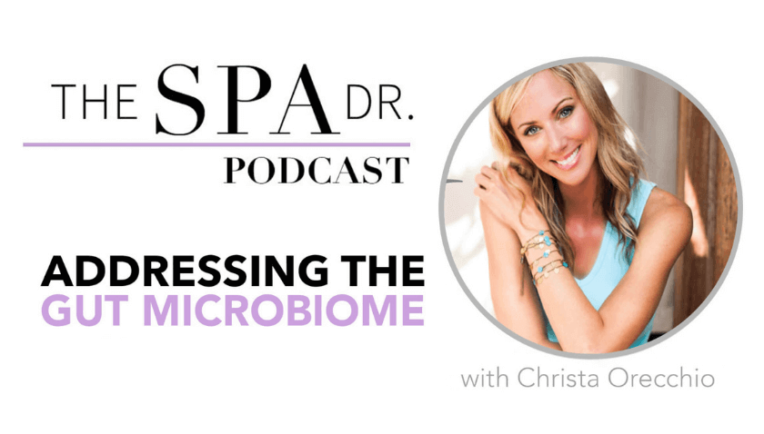
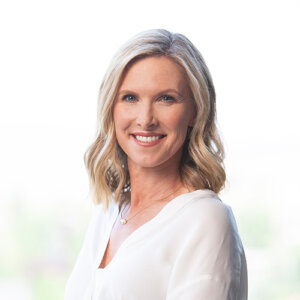
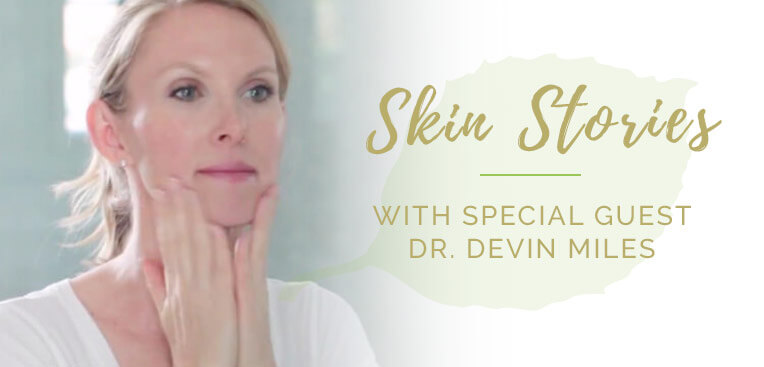
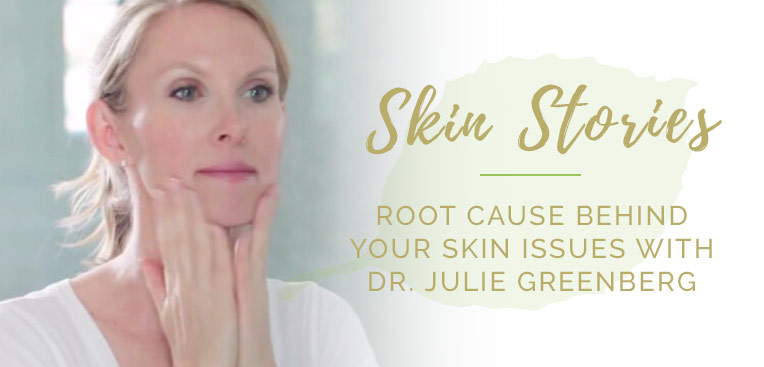

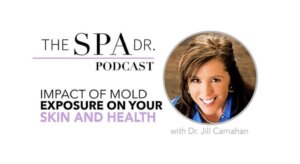
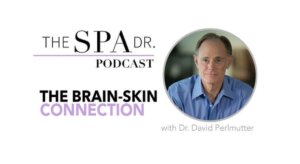
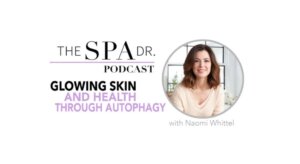
Reader Interactions